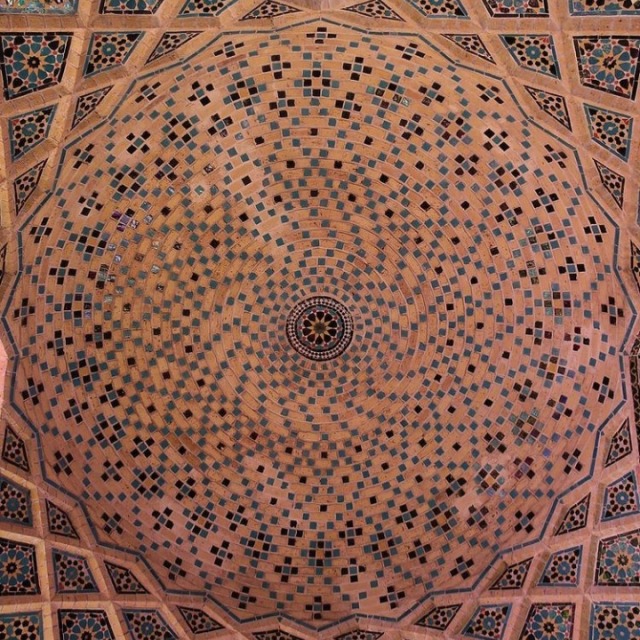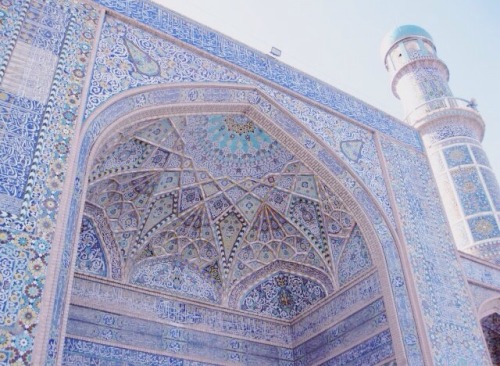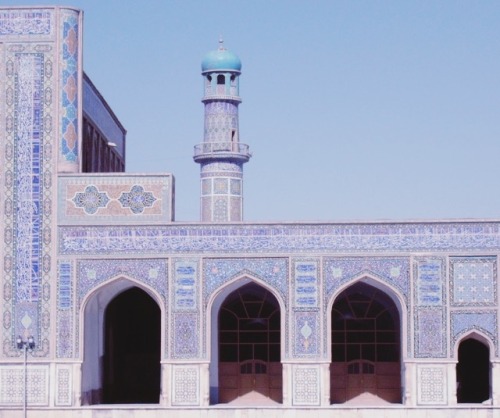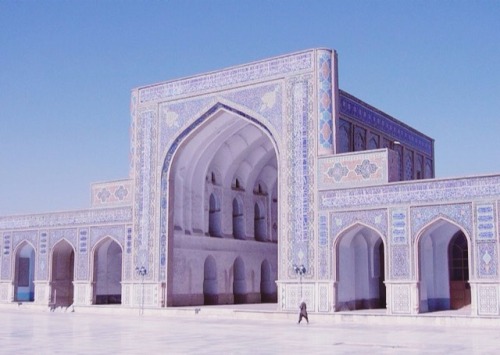#mosques
One Ramadan, I’d gotten really sick. I was sweating buckets, throwing up, and suffering endless rounds of diarrhea. It occurred to me halfway through the day that it was plainly wrong to continue fasting in this state, especially since I had a duty to family members who depended on me. Even so, as I took my first sip of water with my medicine, I felt a different kind of nausea: good old fashioned religious guilt.
Somewhere in all of our hearts, there’s a small corner reserved for the voices of our communities’ judgmental uncles and aunties. Their voices are always whispering, and their eyes are always on us. It’s like a twisted, sick version of an omniscient god, to whom obedience is more important than, you know, actual morality.
We hear their voices every time we pop in earbuds to listen to music. We hear them when we hang out with friends who drink. We hear their angry whispers when we read any book besides the Qur’an (and medical school textbooks). We feel their burning gaze as we fight for LGBTQ rights, advocate feminism, or even, God forbid, speak with an American accent.
These aren’t the effects of a guilty conscience. These are paranoid fears of an irrational ideology. We know those opinions aren’t even Islamic in the least. After all, how can you ever Islamically justify corralling women into dungeon-like conditions in Allah’s House when they share the same open space as men in the Prophet’s own mosque?
The voices in our heads are simply that: voices. They’re disembodied, removed from actual people. What they represent is our own understanding of our religious tradition and heritage. Somewhere along the way, we’ve come to believe that Islam is restrictive and rigid. This belief keeps us in line, and allows the power-mongering creeps in our community to hold one over us. Sure, we don’t believe in the voices personally, but since everyone is aware of these voices, we indirectly perpetuate them. When we hear that a convert was driven out of a mosque simply because he had tattoos, how many of us moved immediately to impeach the mosque board or personally reached out to the convert? Yeah.
So some Muslims, exasperated, leave Islam altogether. They cannot reconcile the differences between their consciences and what a judgmental, angry, racist, sexist, and xenophobic “Islam” asks of them. The rest of us hang on, but bitterly resent a beautiful tradition being bent into chains.
These chains only exist so long as we believe they’re there. In fact, they’re barely there as it is. Try counting how many backbiting, opportunistic, evil bigots there are in your local community; I’d be surprised if there were more than a dozen. There will always be more Frodos than gollums. They will always be a minority. All we have to do is own Islam for ourselves, to live unapologetically and proudly as Muslims of our own accord.
“Haters gonna hate. Keep calm and Muslim on.”
- Prophet Muhammad (pbuh), somewhat paraphrased
Day 4: Shout out to the Local Masjid Imams, who aren’t allowed to miss a single Tarawih prayer, sunnah or not.
Also, their entire Ramadan experience is basically dealing with Front Row thugs.









Nasiralmolk Mosque/ Shiraz/ Iran
Photography: amir tavakoli




Nasiralmolk Mosque/ Shiraz/ Iran
Photography: Ekaterina mishchenkova







Agha bozorg mosque/ Kashan/ Iran
Photography: tahoura mohammadzadeh


Nasiralmolk Mosque/ Shiraz/ Iran
Photography: amir Hossain abtahi


Shafei Mosque/ Kermanshahi/ Iran
Photography: alireza moghaddammanesh
STRANGE WORLD OF ISLAMOPHOBIA
The words of this Hadith (saying of Prophet Muhammad صلى الله عليه وسلم) is sufficient to explain what I see in this world. However, I’m not the only one who feels disturbed by the negativity against Islam that has unfurled.
By the way, it’s not only Muslims who are affected by this world’s chaos and disorder; it’s people of other faiths too; they’re experiencing torture and would like some…

Art of Islam - Splendours of Islam
One of the clear examples of Islamic art: Muslim India
The text below is the excerpt of the book Art of Islam (ASIN: 1646993616), written by Gaston Migeon and Henri Saladin, published by Parkstone International.
https://www.amazon.com/Art-Islam-Gaston-Migeon/dp/1646993616?ref_=ast_sto_dp
The chasm separating India from the Islamic epicentre is so vast that Islamic architecture there was influenced by the flourishing art that had already been…

The Masjid-i Jami of Herat, the city’s first congregational mosque, was built on the site of two smaller Zorastrian fire temples that were destroyed by earthquake and fire. A mosque was begun by the Ghurid ruler Ghiyas ad-Din Ghori in 1200 (597 AH), and, after his death, the building was continued by his brother and successor Muhammad of Ghor. This is confirmed both by an inscription on the eastern Ghurid portal uncovered in 1964 during a restoration, and by the sixteenth century Timurid historian Khwandamir in his Khulasat al-Akhbar.
yungmeister mosques remind me of you
Post link
Jama Masjid also called Masjid-i Jahān Numā, was built by Mughal Emperor Shah Jahan in 1650 - 56
The mosque was designed by architect Ustad Khalil and constructed by approximately 5000 workers.
Jama Masjid, now the second-largest mosque on the Indian subcontinent, is also an impressive example of Mughal architecture.
Repost from @delhinamaa
#delhigram
#delhitravel
#delhidiaries
#picoftheday #delhinamaa
#photography #photoshoot #photo #livelife #history #itihaskibaat #itihas #mugal #muslim #ummah #mosque #mosques #jamamasjid #travel #architecture #poet #urdupoetry #urdushayari #mugalarchitecture #knowledge #artistsoninstagram #delhidiaries #delhi #olddelhi #puranidilli #delhi6
https://www.instagram.com/p/CeIeXzVP4-a/?igshid=NGJjMDIxMWI=
Post link





